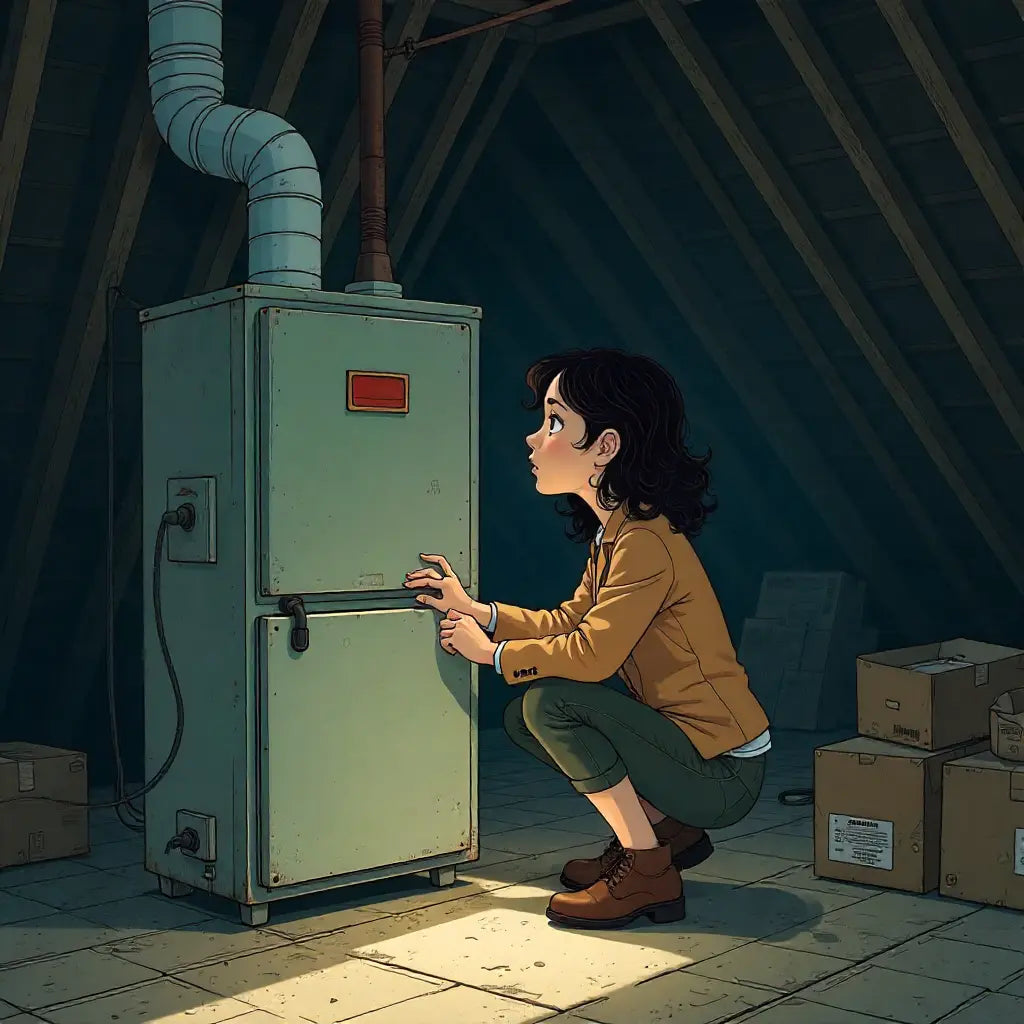🏡 Why Proper Furnace Installation Matters
Installing a gas furnace isn’t just about keeping warm. It’s about protecting your home, your family, and your wallet. A poorly installed furnace can lead to gas leaks, carbon monoxide risks, sky-high utility bills, and even fire hazards.
That’s why understanding the process—even if you’re hiring a pro—is essential. When you know what’s involved, you can ask better questions, spot red flags, and make smarter choices for your home’s comfort and safety.
📋 Step 1: Evaluate Your Home’s Heating Needs
Before anything goes in, you need to know what size and type of furnace makes sense for your space. This involves a Manual J Load Calculation—a fancy term for evaluating how much heat your home actually needs.
Key factors:
-
Square footage of your home
-
Number of windows and doors
-
Insulation quality
-
Climate zone
-
Ductwork layout
Oversized or undersized furnaces are a major no-no. They lead to inefficient cycling, uneven heating, and early system failure. Learn more about how to size your system properly in this HVAC load calculation guide from Energy Vanguard.
🧰 Step 2: Get Familiar with Installation Requirements
Installing a gas furnace requires more than just muscle—it’s about meeting local codes, handling combustion safety, and ensuring proper ventilation.
Here’s what’s typically required:
-
Dedicated gas line with proper shut-off valve
-
Vent pipe or flue to remove exhaust gases
-
Proper return and supply ducts
-
Access to a 120V outlet for controls and blower motor
-
Clearance from combustible materials (check your furnace manual)
If you’re placing the furnace in a crawlspace or attic, special support and ventilation rules apply. The International Residential Code (IRC) outlines these in detail—you can read about gas appliance code requirements here.
🦺 Step 3: Prioritize Safety Every Step of the Way
Here’s where the savvy really kicks in. Gas furnaces must be installed with carbon monoxide safety in mind. That means:
✅ Installing CO detectors near the furnace and bedrooms
✅ Ensuring proper combustion air supply
✅ Verifying the flue draft and checking for backdrafting
✅ Sealing ducts and connections to prevent leaks
✅ Using a licensed HVAC pro to verify gas pressure and test for leaks
A faulty install can cause silent danger. According to SafeWise, carbon monoxide poisoning sends over 50,000 people to the ER each year. Let’s not join that stat.
🛠 Step 4: Installation Day—What to Expect
When it’s go time, your HVAC tech will:
-
Disconnect your old furnace safely
-
Prep and level the new platform or slab
-
Install the furnace and connect the gas line
-
Set up the flue or vent pipe
-
Hook up the electrical and thermostat wiring
-
Seal and test the ductwork
-
Run a combustion analysis test
Expect the job to take 6–10 hours depending on complexity. Ask your installer for a start-up report showing that gas pressure, static pressure, and CO levels are within specs.
Want to see what a proper install looks like? This Erie Mutual Insurance video walks through key safety checks after a new gas furnace is fired up.
🧾 Step 5: Don’t Forget Permits and Inspections
Most cities and counties require a permit for furnace installation. A licensed contractor will pull the permit for you, and a building inspector will visit afterward to ensure everything meets code.
Skipping this step can:
-
Void your warranty
-
Affect your homeowner’s insurance
-
Create resale headaches
🧽 Step 6: Post-Install Maintenance & Peace of Mind
Once installed, schedule an annual furnace tune-up—especially before winter. A pro will:
-
Check flame sensor and igniter
-
Inspect heat exchanger for cracks
-
Lubricate blower motor
-
Test for carbon monoxide
-
Replace filters
Ongoing maintenance not only protects your investment but keeps your efficiency high and energy bills low. Want to dive deeper into long-term care? This guide from Bob Vila has a great checklist.
💬 Final Thoughts from Savvy Mavi
Installing a gas furnace may seem like a mountain, but with the right guide (hi 👋), it becomes a hill you can handle—or confidently hand off to a licensed pro.
Safety, sizing, code compliance—each piece matters. And the more you know, the more control you have over your comfort and costs. So whether you’re prepping for your first install or planning an upgrade, make sure you choose a furnace that fits your home and follows the rules.
Need a reliable, energy-efficient system that ticks all the boxes? Head over to The Furnace Outlet’s curated gas furnace collection to find just what your home needs—delivered straight to your door, backed by warranty and support.
Trying to decide between a gas or electric furnace? Visit: Which One Fits Your Lifestyle (and Budget)?
Stay warm. Stay smart. Stay savvy. 🛠🔥
— Savvy Mavi







